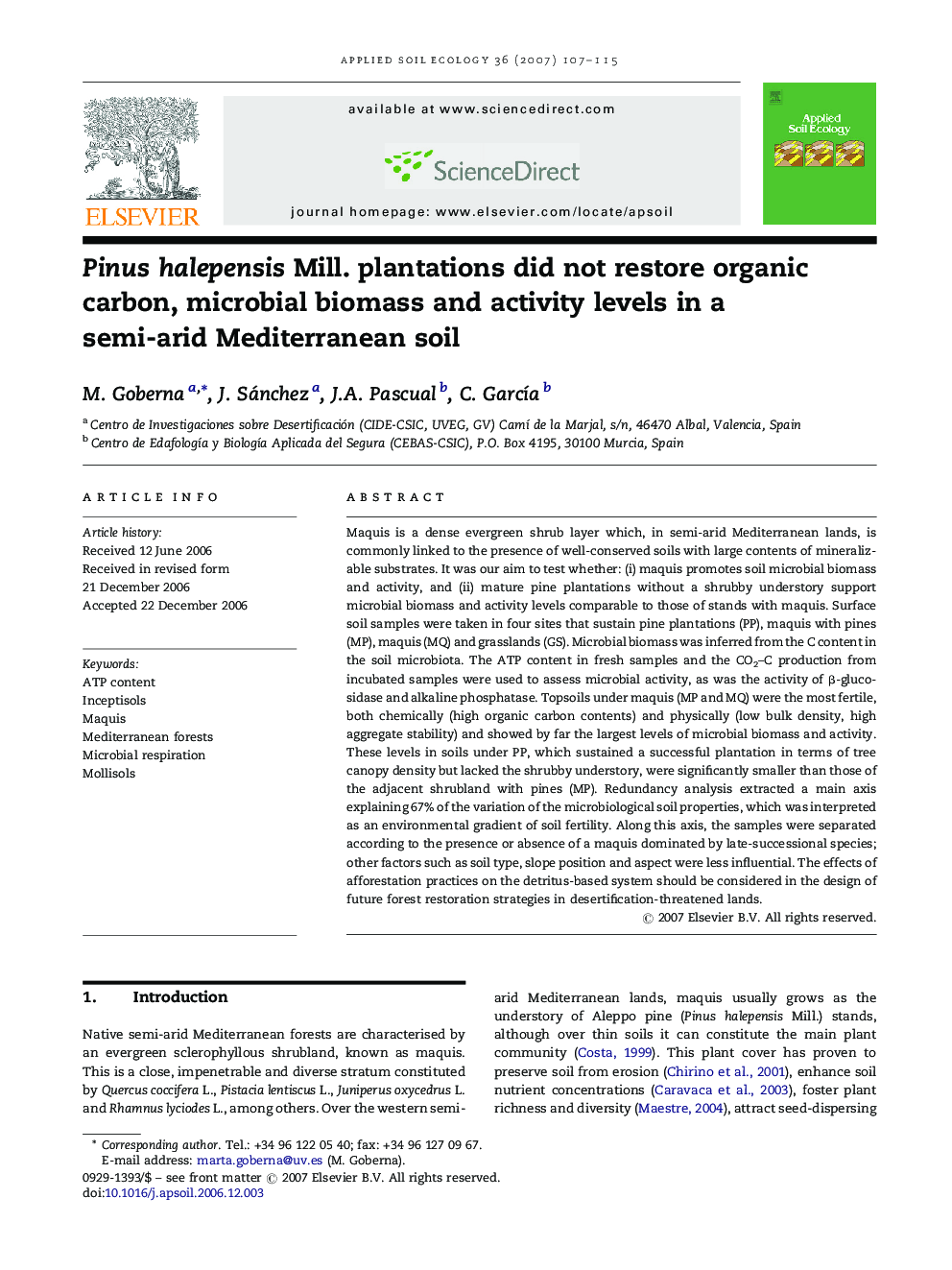| کد مقاله | کد نشریه | سال انتشار | مقاله انگلیسی | نسخه تمام متن |
|---|---|---|---|---|
| 4383432 | 1617838 | 2007 | 9 صفحه PDF | دانلود رایگان |
عنوان انگلیسی مقاله ISI
Pinus halepensis Mill. plantations did not restore organic carbon, microbial biomass and activity levels in a semi-arid Mediterranean soil
دانلود مقاله + سفارش ترجمه
دانلود مقاله ISI انگلیسی
رایگان برای ایرانیان
کلمات کلیدی
موضوعات مرتبط
علوم زیستی و بیوفناوری
علوم کشاورزی و بیولوژیک
بوم شناسی، تکامل، رفتار و سامانه شناسی
پیش نمایش صفحه اول مقاله

چکیده انگلیسی
Maquis is a dense evergreen shrub layer which, in semi-arid Mediterranean lands, is commonly linked to the presence of well-conserved soils with large contents of mineralizable substrates. It was our aim to test whether: (i) maquis promotes soil microbial biomass and activity, and (ii) mature pine plantations without a shrubby understory support microbial biomass and activity levels comparable to those of stands with maquis. Surface soil samples were taken in four sites that sustain pine plantations (PP), maquis with pines (MP), maquis (MQ) and grasslands (GS). Microbial biomass was inferred from the C content in the soil microbiota. The ATP content in fresh samples and the CO2-C production from incubated samples were used to assess microbial activity, as was the activity of β-glucosidase and alkaline phosphatase. Topsoils under maquis (MP and MQ) were the most fertile, both chemically (high organic carbon contents) and physically (low bulk density, high aggregate stability) and showed by far the largest levels of microbial biomass and activity. These levels in soils under PP, which sustained a successful plantation in terms of tree canopy density but lacked the shrubby understory, were significantly smaller than those of the adjacent shrubland with pines (MP). Redundancy analysis extracted a main axis explaining 67% of the variation of the microbiological soil properties, which was interpreted as an environmental gradient of soil fertility. Along this axis, the samples were separated according to the presence or absence of a maquis dominated by late-successional species; other factors such as soil type, slope position and aspect were less influential. The effects of afforestation practices on the detritus-based system should be considered in the design of future forest restoration strategies in desertification-threatened lands.
ناشر
Database: Elsevier - ScienceDirect (ساینس دایرکت)
Journal: Applied Soil Ecology - Volume 36, Issues 2â3, June 2007, Pages 107-115
Journal: Applied Soil Ecology - Volume 36, Issues 2â3, June 2007, Pages 107-115
نویسندگان
M. Goberna, J. Sánchez, J.A. Pascual, C. GarcÃa,